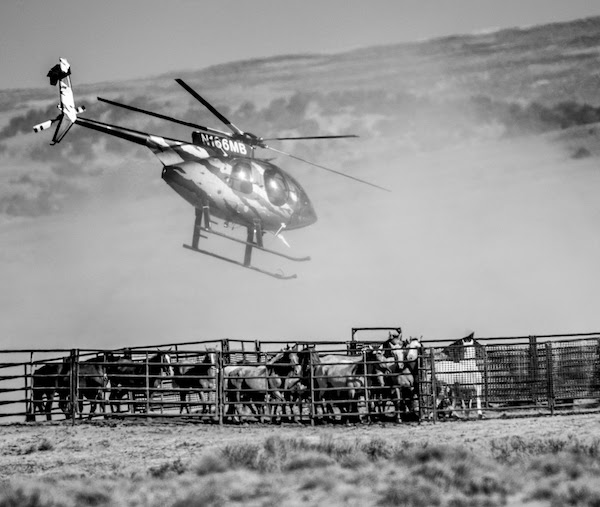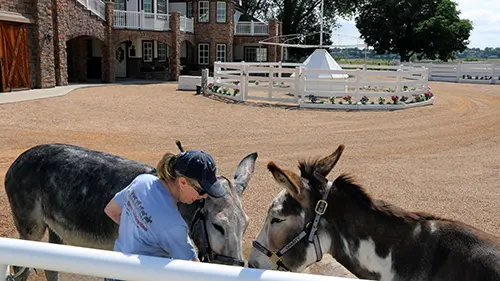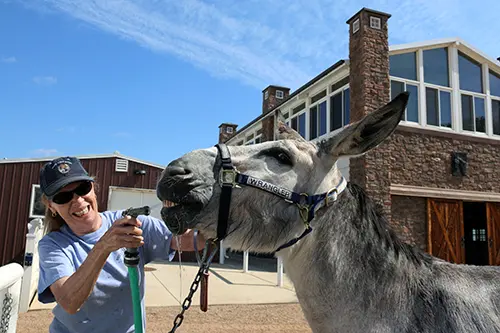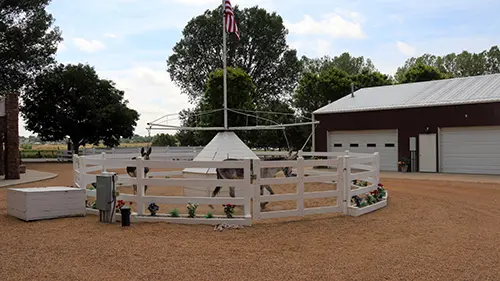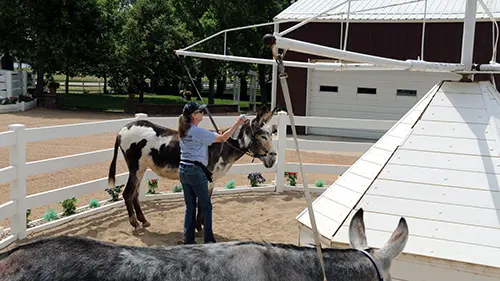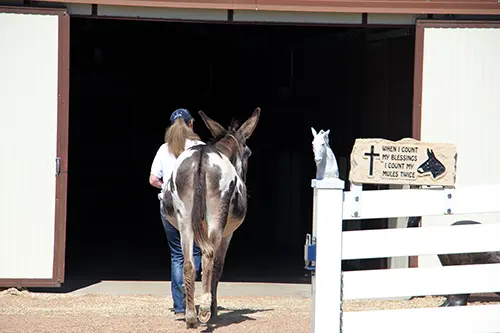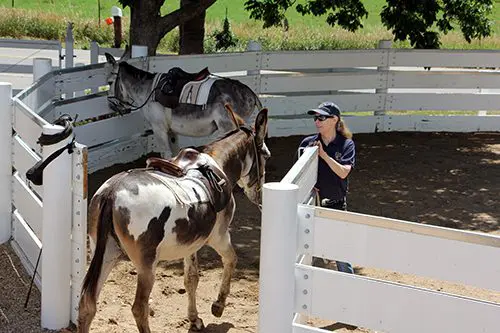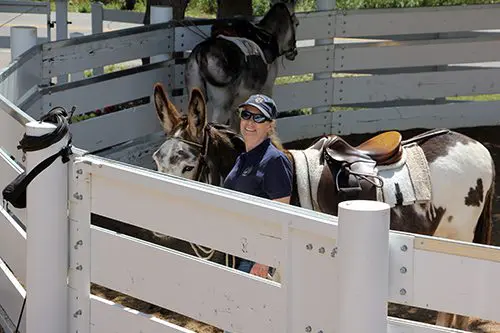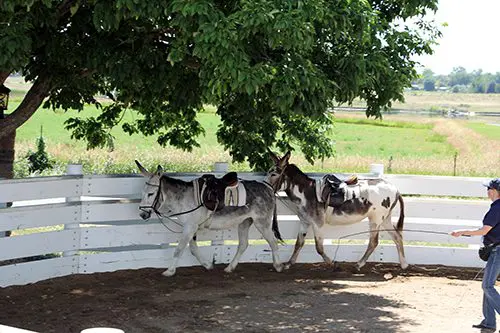Is Your Donkey Cold??
The following is from Save Your Ass Long Ear Rescue:
Blanketing Donkeys

Many of us New Englanders are already feeling the effects of the cooler temperatures, the shortening of days and the frost on the pastures in the morning before the sun comes up.
There’s been quite a bit of debate online about whether or not donkey and mule owners should blanket or not blanket their long eared family members. So we wanted to share our two cents on the topic to hopefully shed some insight to donkey owners.
The short answer to a complicated question is, it depends. It depends on where you live, how cold it is, how wet it is, the age of your donkey, if they have cushings disease or any other types of illnesses, etc.
What we normally hear is, “But my donkey gets so fluffy why would he need a blanket?” But the truth is your donkeys fluffy fur does not have the density or insulating properties that a horses natural coat provides. Not only that but donkeys lack the oil horses have in their coats that act as a natural water repellent, which in turn keeps their skin dry. This is also why horses have that sweet horse smell that we all know and love, and donkeys do not. (Sorry donkeys.)
Donkeys descend from desert species, they use dust and sand as a way to “bathe” themselves. Since it doesn’t rain often in the desert, donkeys have not evolved to have oil in their coats to protect them from our freezing rain, sleet and snow that our northern winters bring. Mixing a lack of a waterproofed coat, plus a lot of extra winter hair without insulating properties and wet weather- is a combination for a very unhappy donkey, and can sometimes even be a death sentence for an immune compromised or older donkey.
Some may say “but my donkey never acts cold!” Donkeys have evolved to freeze (no pun intended) instead of having a flight or fight response like most mammals. Donkeys stop and think through problems or how to respond to a stressful situation. Which is why they’ve unfortunately gotten the notorious title of being “stubborn.” Most donkeys will not show when they are sick or not feeling well until they are in the later stages of their illness. Which is why it is so hard to tell when they are having a bout of colic or are injured. It’s their instincts way of protecting them from being eaten by predators. Pretty fascinating, but not great for the people who love them and want to know when they’re not well.
The bottom line is, just because they survive the winters or always have without being blanketed, doesn’t mean they are thriving and comfortable. This goes especially for the ones who are getting long in the tooth, are sick, injured, have cushings disease or thyroid issues. These donkeys are more vulnerable than a younger, healthier donkey and need an extra layer or two to give them a hoof up this winter to keep them cozy, safe and comfortable.
The bare minimum they should have is a 3 sided shelter that is deeply bedded with pine shavings, and cleaned daily. I would go a step further to say that warm mash soup made up of a handful of timothy pellets with their loose mineral supplement would also go a long way.
Please don’t take what we’ve said here today and use it as a blanket statement! 😁 Use your discernment and go based on the weather and your donkey. Each donkey should have a few different coats, a rain sheet, and a few coats from 200g- 800g insulation.
Other Blanketing Tips
-Blankets should be checked daily to make sure there are no rips, tears or dampness under them.
-Clips should always be clip side facing in toward the donkeys body.
-Donkeys should be groomed at minimum once a week with a ‘slicker brush’ to ensure their skin is still getting some air, so dead skin is being removed and to check their body condition.
-Blankets need to be washed and re-waterproofed every year. You can find waterproofing spray online or at any tack shop that sells horse blankets. (We like scotch guard)
-When putting on a blanket start fastening buckles and clips from the front to the back.

Have trouble fitting your donkeys for blankets? Bray Hollow Farm in NY makes blankets specifically for ponies and donkeys. If you’d like to check them out you can click the link below to check out their website!
Memorials

Whichahpi
This year we have taken on more senior animals than we ever have before in a single year. We are always happy to take on the equines who are at the last stages of their life and require a little extra TLC. Ann and I are both suckers for a grey faced sad eyed long ear. However so deserving these animals are they almost always require extensive care, vet work, and farrier work to make sure that they are able to be kept comfortable. We’ve had to let go of two friends at the end of October. As hard as the decisions were, we are honored to be able to give them that last gift of letting them go with peace and dignity.
As many of you are aware Whichahpi our Medicine hat paint horse had X-rays done of his spine. We found out that he had some more serious complications going on than met the eye. We decided the kindest thing to do was to let him go. We said goodbye to our friend on October 24th.

Harley
Harley came to us just a few short months ago underweight, confused and sore. Harley gained a significant amount of weight while he was with us and made three other friends who were his herd companions.
Harley was loved by every single person who met him, and he loved all of them back. He started to have trouble getting up from his naps the last few days until one morning when he could not get up no matter how much he tried. We called our vet and gave him some pain meds while we waited. He did finally get up but we still had our vet out because something was still very off with him and I just did not have a good gut feeling.
After an examination and a few tests it was determined that he was in heart failure. We decided to let Harley go.. our vet estimated Harley was at least in his late 30’s.
We are absolutely gutted over these losses.. The rescue feels so empty without him and Whichahpi. I don’t think a day will go bye where I won’t think about the animals we’ve had to let go.
Thank you to all of you who donated towards his arthritis medication, grain bill and care. It truly made a difference in his time with us and he was able to be comfortable and pain free in the end.
Rest easy buddy you are sorely, sorely missed.

Due to fundraising being so low, and having spent a very large amount of money on so many seniors this year. We are going to be more careful of the ages of animals we take in. It is not sustainable for us to take on so many seniors who are not adoptable. If we continue to do so, we will cease to exist as a rescue.
Sometimes folks are in denial about how old their animals are, sometimes they are not truthful with us when surrendering, and sometimes it is passing the buck. We LOVE the seniors but are not set up as a sanctuary. It’s not fair to us or our supporters to keep enduring one heartbreak after another. Some day in the future I would like to have a set up for the older donkeys with special needs. But that is quite a ways down the road.
Thank you all for reading this far and for your feedback every newsletter, it and you are so appreciated and valued by all of us at SYA.
Wishing you all the best,
Hannah


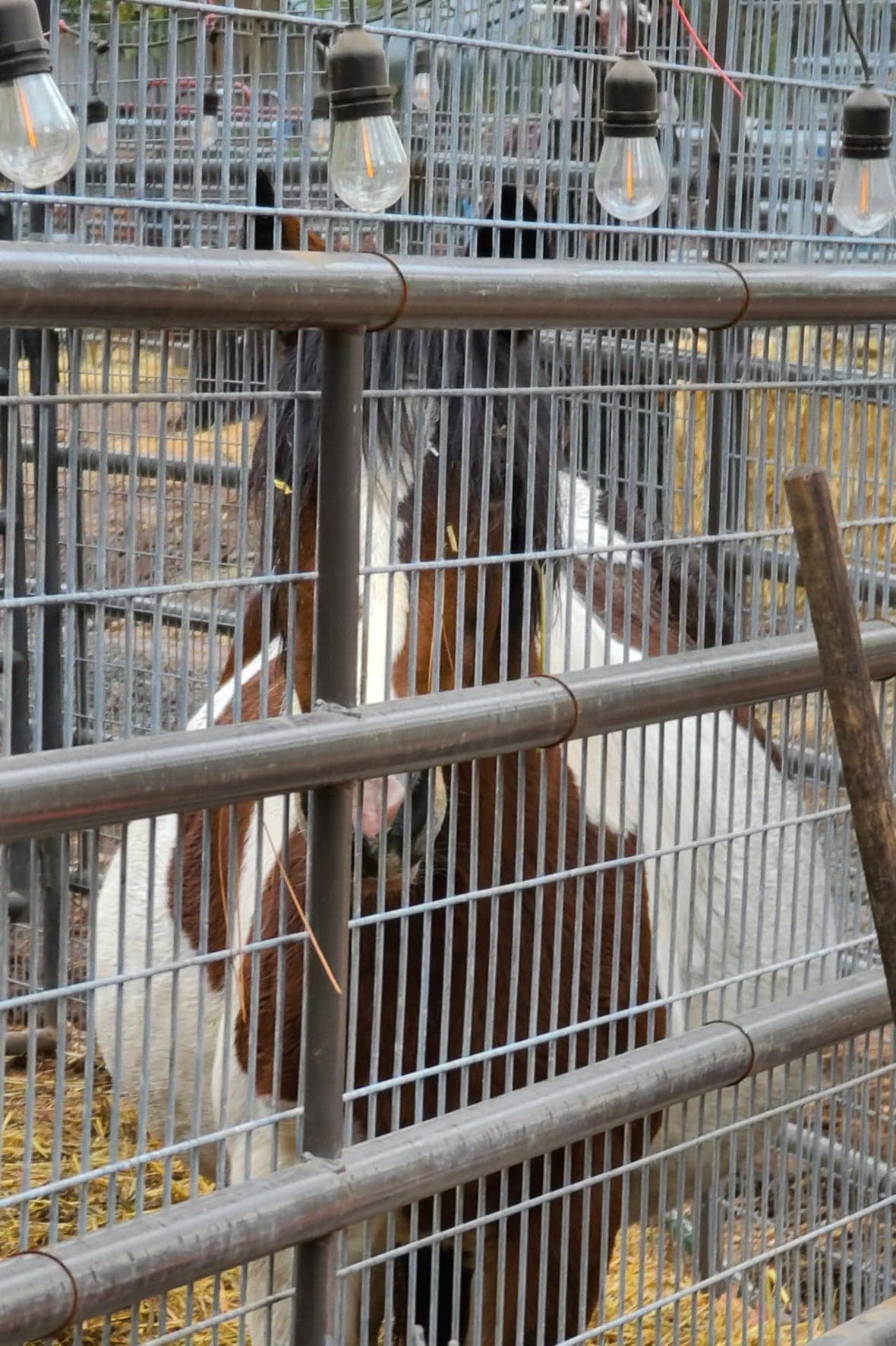
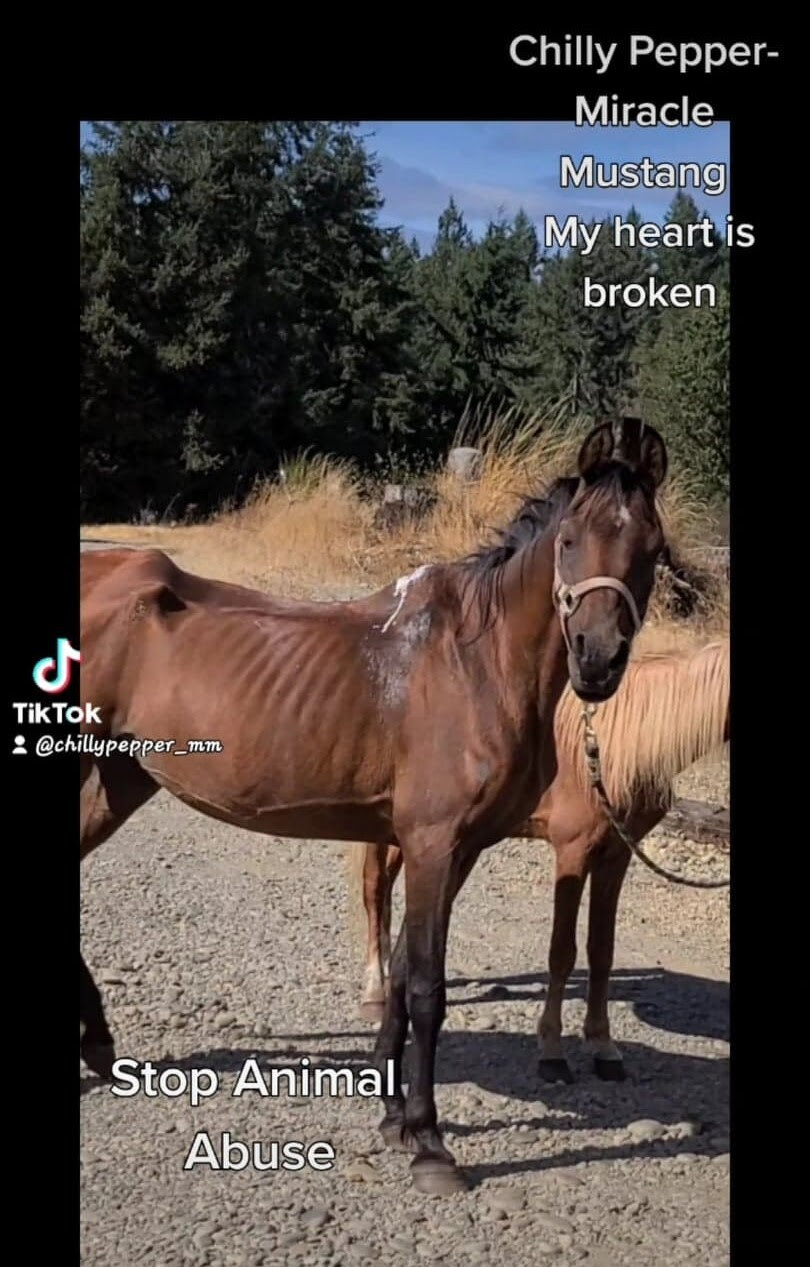


 While doing the exercises in balance by riding without the aid of your reins as described in DVD #5, you probably discovered a lot more shifting of your own balance than you imagined. This nearly imperceptible shift of balance, however, can grossly affect the balance of your equine. Until now, I have always given the rider a visual point of reference by allowing you to glance down at the outside front leg. Now you will want to be more inwardly conscious of your own body position.
While doing the exercises in balance by riding without the aid of your reins as described in DVD #5, you probably discovered a lot more shifting of your own balance than you imagined. This nearly imperceptible shift of balance, however, can grossly affect the balance of your equine. Until now, I have always given the rider a visual point of reference by allowing you to glance down at the outside front leg. Now you will want to be more inwardly conscious of your own body position. Your seat bones are closest to your body’s center of gravity, making them the best sensors for balance. “Feel” the weight shift from one seat bone to the other through turns and circles, and then even out as you ride straight lines and diagonals. You will soon discover that, in order to do a circle in better balance, you must have slightly more weight on the outside seat bone and leg.
Your seat bones are closest to your body’s center of gravity, making them the best sensors for balance. “Feel” the weight shift from one seat bone to the other through turns and circles, and then even out as you ride straight lines and diagonals. You will soon discover that, in order to do a circle in better balance, you must have slightly more weight on the outside seat bone and leg. Do small circles, but only as small as your equine can handle without losing his balance. Once he can easily maintain his balance without interruption, you can begin to decrease the size of the circles. Keep movements planned and large. This will give your equine plenty of response time through planned movements and will allow you to ride and correct the balance with more ease. If, for some reason, your animal loses his balance, falls out or rushes, stop him by using even pressure on both reins, with a squeeze/release action. Back him up slowly and deliberately, remembering to walk backward with your seat and legs, one step at a time, and then calmly go back and try to repeat the movement. If he makes the same mistake a second time, halt, back up and then walk through the area that is giving you the problem. Resume trotting or cantering when he complies. When you approach that area again, slow him down again, go through and resume your plan.
Do small circles, but only as small as your equine can handle without losing his balance. Once he can easily maintain his balance without interruption, you can begin to decrease the size of the circles. Keep movements planned and large. This will give your equine plenty of response time through planned movements and will allow you to ride and correct the balance with more ease. If, for some reason, your animal loses his balance, falls out or rushes, stop him by using even pressure on both reins, with a squeeze/release action. Back him up slowly and deliberately, remembering to walk backward with your seat and legs, one step at a time, and then calmly go back and try to repeat the movement. If he makes the same mistake a second time, halt, back up and then walk through the area that is giving you the problem. Resume trotting or cantering when he complies. When you approach that area again, slow him down again, go through and resume your plan. I ride my equines diagonally through the aids to get the best lateral and vertical response. I want to maintain a good forward movement, which means that the impulsion must come from the hindquarters and push forward. Think of your hands and legs as four corners of a box that contains your equine. If you push forward on one side at a time from, say, left leg to your left hand, it leaves the other whole side of the animal unchecked, and he will proceed forward with a tendency to drift into the “open” side. This is why you have to ride alternately and diagonally from the left leg to the right hand and from the right leg to the left hand. It is why you ride from back to front, leg to hand, in a diagonal fashion—it pushes your animal from the outside leg forward into a straight and balanced inside rein, and from the supportive inside leg to the outside rein—he remains upright on the arcs and sufficiently bent. The wider the space between your legs and between your hands, the more lateral “play” you will feel in your equine. If you keep your hands close together and your legs snugly around his barrel, there is a lot less lateral “play” and a great deal more accuracy when doing your patterns. Think of your legs and hands creating a “train track” with rails between which your animal must move. The wider the space between your hands and legs, the “snakier” his movements will become.
I ride my equines diagonally through the aids to get the best lateral and vertical response. I want to maintain a good forward movement, which means that the impulsion must come from the hindquarters and push forward. Think of your hands and legs as four corners of a box that contains your equine. If you push forward on one side at a time from, say, left leg to your left hand, it leaves the other whole side of the animal unchecked, and he will proceed forward with a tendency to drift into the “open” side. This is why you have to ride alternately and diagonally from the left leg to the right hand and from the right leg to the left hand. It is why you ride from back to front, leg to hand, in a diagonal fashion—it pushes your animal from the outside leg forward into a straight and balanced inside rein, and from the supportive inside leg to the outside rein—he remains upright on the arcs and sufficiently bent. The wider the space between your legs and between your hands, the more lateral “play” you will feel in your equine. If you keep your hands close together and your legs snugly around his barrel, there is a lot less lateral “play” and a great deal more accuracy when doing your patterns. Think of your legs and hands creating a “train track” with rails between which your animal must move. The wider the space between your hands and legs, the “snakier” his movements will become. The finer you tune your own aids, the lighter and more responsive your equine will become. To summarize, before you begin, plan your course of action. Keep movements large and flowing, your eyes looking ahead and your aids even and close in. Employ the aids diagonally, while firmly encouraging forward energy horizontally from back to front while at the same time, encouraging vertical flexion over the topline. Do not be too concerned about where your equine’s nose is if his body movement is correct. As he becomes more confident, fit and relaxed, and as your aids become more correct, his head and neck will drop into the improved posture of their own accord. If you try to set the head and neck on the vertical before the body has been conditioned to balance and round, you will produce an animal with a hollow back and a lot of vertical and lateral stiffness. This will prevent him from correctly responding to your aids even if he wants to, because he will be physically unable to do so. It may take a little longer to correctly condition both your body and his, but the result is a sound, cooperative animal, possessing the mental and physical qualities necessary for the best performance upon your request. You may even experience the surprise of a better response to your aids and good posture, balance and strength in your own body, as well.
The finer you tune your own aids, the lighter and more responsive your equine will become. To summarize, before you begin, plan your course of action. Keep movements large and flowing, your eyes looking ahead and your aids even and close in. Employ the aids diagonally, while firmly encouraging forward energy horizontally from back to front while at the same time, encouraging vertical flexion over the topline. Do not be too concerned about where your equine’s nose is if his body movement is correct. As he becomes more confident, fit and relaxed, and as your aids become more correct, his head and neck will drop into the improved posture of their own accord. If you try to set the head and neck on the vertical before the body has been conditioned to balance and round, you will produce an animal with a hollow back and a lot of vertical and lateral stiffness. This will prevent him from correctly responding to your aids even if he wants to, because he will be physically unable to do so. It may take a little longer to correctly condition both your body and his, but the result is a sound, cooperative animal, possessing the mental and physical qualities necessary for the best performance upon your request. You may even experience the surprise of a better response to your aids and good posture, balance and strength in your own body, as well..gif)
